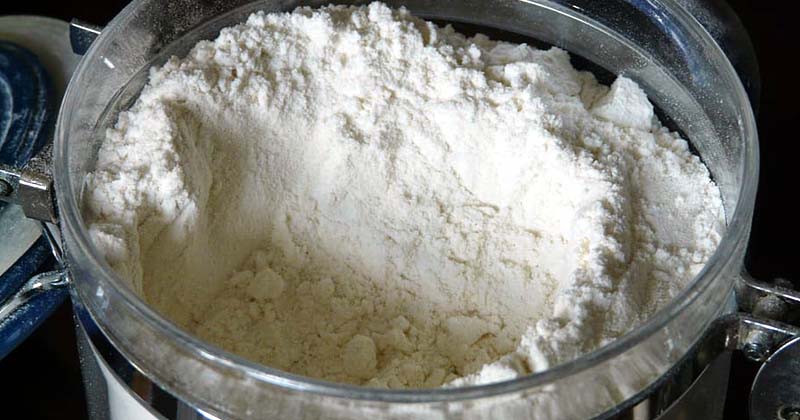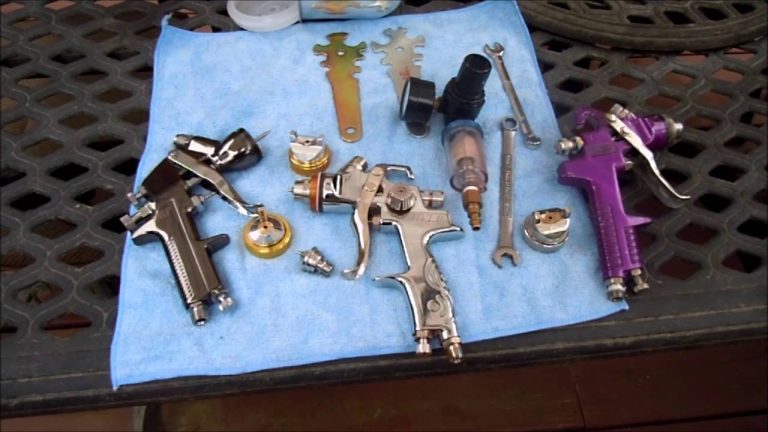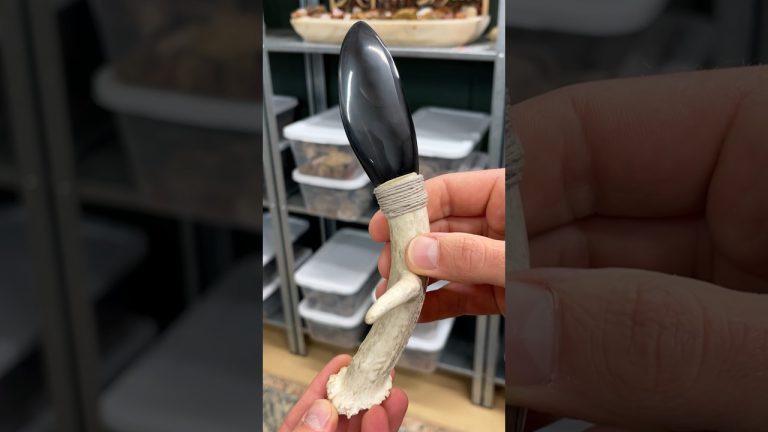Flour is considered a non-perishable food. However, if you don’t store flour properly, it will go bad. Here’s what you need to know about flour storage and the best options, including long-term storage.
How to Store Flour Long-Term
Flour won’t last more than 6 months in its original paper bag. If you move it to an air-tight container, it can last 6 – 10 months. The best method for long-term storage(over 3 months) is Mylar bags with oxygen absorbers.
Why Flour Goes Bad
Like any dry food, flour can go bad if exposed to oxygen, light, moisture, or insects. If you just leave a bag of flour in your pantry, here are some problems that can make the flour go bad.
Mold: Humidity or temperature fluctuations can cause flour to absorb moisture and eventually become moldy. You’ll be able to smell the mold before you see it.
Oxidation: Oxidation occurs when oxygen from the air interacts with nutrients in the flour, causing them to break down. This is particularly a problem with whole-grain flours. Oxidation will cause the natural oils in the whole grains to go rancid.
Insects: Even if you store your flour in air-tight containers, you can still get insects like weevils or moths.
How is that possible?
Because flour often already has insect eggs in it when you buy it. Depending on the conditions, it can take weeks or months for them to hatch. Once they do hatch, though, you have an infestation that is very hard to eliminate.
Absorbing Smells: Flour can act like a sponge and absorb the smells of whatever is near it. Have onions next to your flour? Then the cake you make with it will have an oniony smell, too. You especially don’t want to store flour (or any other food, for that matter!) near chemicals like cleaning products.
Best Ways to Store Flour
Below are several flour storage methods. The best method for storing flour long-term (over 3 months) is Mylar bags with oxygen absorbers. No other method is truly reliable for long-term flour storage.
Air-Tight Containers
Shelf Life: Approximately 6-10 months
Flour usually won’t last more than 6 months in its original paper package. Removing it from the package and putting it into an air-tight container will make it last much longer.
One potential problem is that there might already be insect eggs in the flour when you get it. It can take weeks or even months for the eggs to hatch. When they do, you will have a nasty infestation that is hard to eliminate. Thus, it’s wise to take steps to kill insect eggs in the flour before storage, such as by freezing or microwaving it first.
Some good flour storage containers include:
Freezer
Shelf Life: Indefinitely
If you have room in your freezer, freezing flour is a great way to store it. It will last forever in the freezer, though you should have a plan in case power outages occur.
To use, remove flour from the freezer and let it get to room temperature. Note that flour can absorb moisture due to condensation while you bring it to room temperature. To prevent moist flour, keep it in its sealed container – the condensation will collect on the container instead of getting into it.
Drying Damp Flour:
If the flour gets damp, spread it on a baking sheet and heat it in the oven at about 200F. If the flour is very damp, you might need to heat it for up to an hour to get it dry. After drying it, sift it to remove any clumps.
Vacuum Sealing
Shelf Life: 1-2 years
The vacuum sealing process removes air from the packaging. The bags are not completely leak-proof; air and humidity will eventually seep through. However, the reduced amount of air means flour stored this way will last much longer.
Vacuum sealing also keeps insects from getting into your flour. It will NOT kill insect eggs already in the flour, though. That’s why many people first take steps to kill insects in dry food before storage.
To store flour with vacuum sealing:
- Place the entire bag of flour into a large vacuum sealer bag. You cannot dump the flour directly into the vacuum sealer bag because the particles will get sucked into the machine.
- Follow your product’s instructions to vacuum seal the flour.
- Put the sealed flour in the freezer for at least 96 hours. This is to kill any insect eggs which are in the flour.
- If you must remove the flour from the freezer but won’t use it immediately, let it come to room temperature before putting it in any other storage container. Otherwise, condensation will form.
Buckets, Plastic Containers, or Jars with Oxygen Absorbers
Shelf Life: 5+ years
Oxygen absorbers are little packets of iron that trap oxygen. Placing OA packets into a food-grade plastic container with flour will absorb the oxygen in the container and prevent spoilage from oxygenation. The lack of oxygen also means that insect eggs can’t hatch.
The problem is that most storage containers are not truly air-tight and will eventually leak. This includes recycled soda bottles as well as food buckets.
Buckets with gasket lids (see on Amazon) are usually better at preventing air leakage, so they are a decent option if you need to store a large amount of flour.
Canning jars also tend to be very reliable, and you’ll know the oxygen absorbers have worked because the lid will look “sucked down.” Just be careful to store jars somewhere cool and dark, as heat and light can also cause spoilage.
Read about oxygen absorbers here.
Mylar Bags with Oxygen Absorbers
Shelf Life: 10+ years
If you want to store flour for months, years, or even decades, the best solution is to use oxygen absorbers in sealed Mylar bags.
Mylar bags are made from a metal-like material impervious to moisture and oxygen. By sealing flour in Mylar bags with oxygen absorbers, the flour is entirely safe from light, moisture, and oxygen. Even insect eggs can’t hatch because there isn’t oxygen in the packaging.
When stored this way, white flour can last 10-15 years. Whole-wheat flour can last approximately 10 years this way.
Read about how to store food in Mylar bags.
Dry Canning – Not Recommended
Dry canning is where dry foods like flour are put into canning jars with lids and then heated in the oven. The heat is thought to sterilize the food and create a seal. Even though canning jars are used, dry canning is NOT the same as water bath canning.
As warned by NM State University, there are a lot of potential problems with dry canning.
- There’s no evidence that the process sterilizes food
- The process can trap moisture in the jar.
- Botulism poisoning could occur if moist food is sealed in an oxygen-less container. This is not an issue with foods with less than 10% moisture content, like flour, but condensation trapped in the jar could mean the flour gets very wet.
- Jars can sometimes EXPLODE.
Because of these issues, Mylar bags with oxygen absorbers are the only acceptable method for storing flour long-term.
















